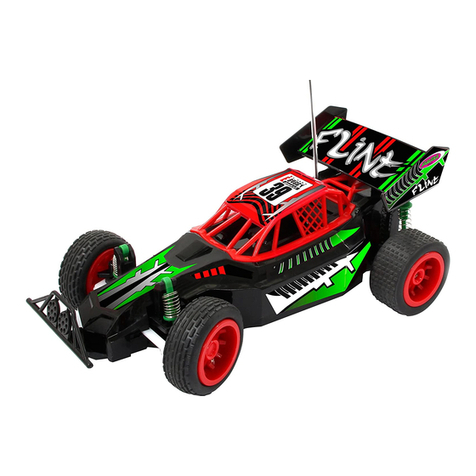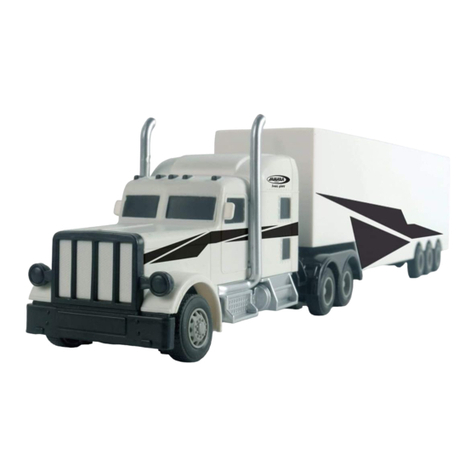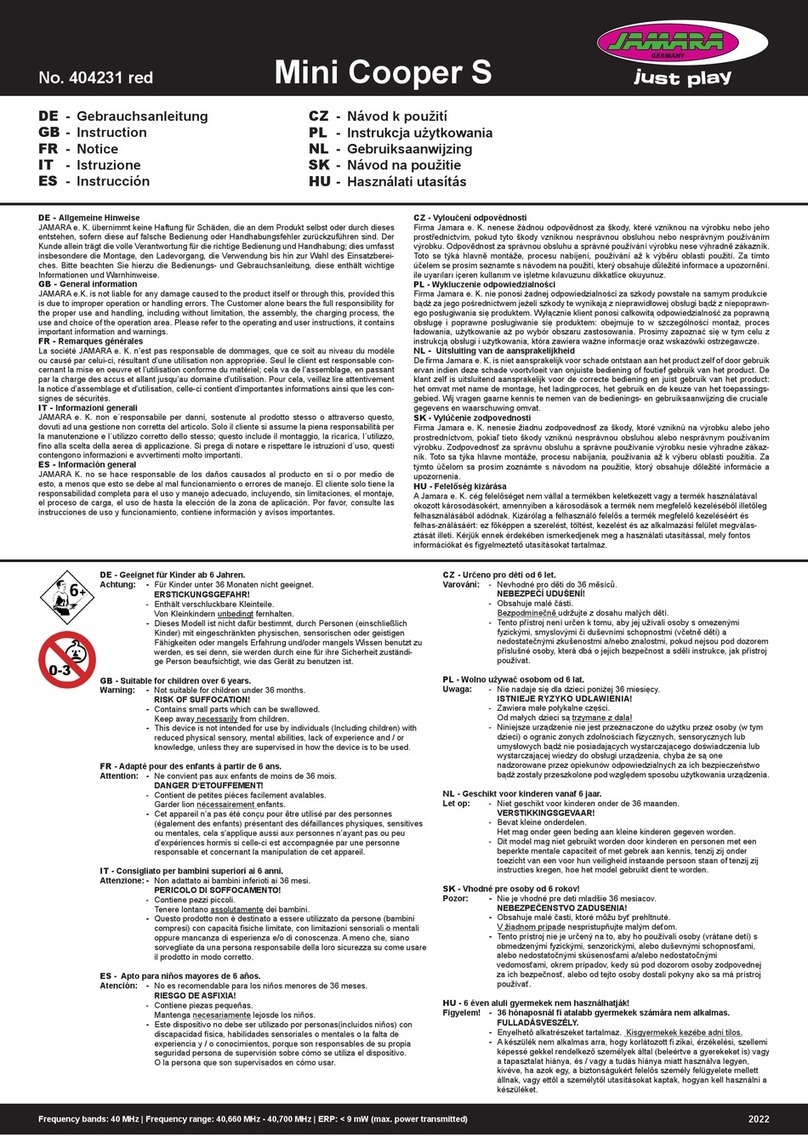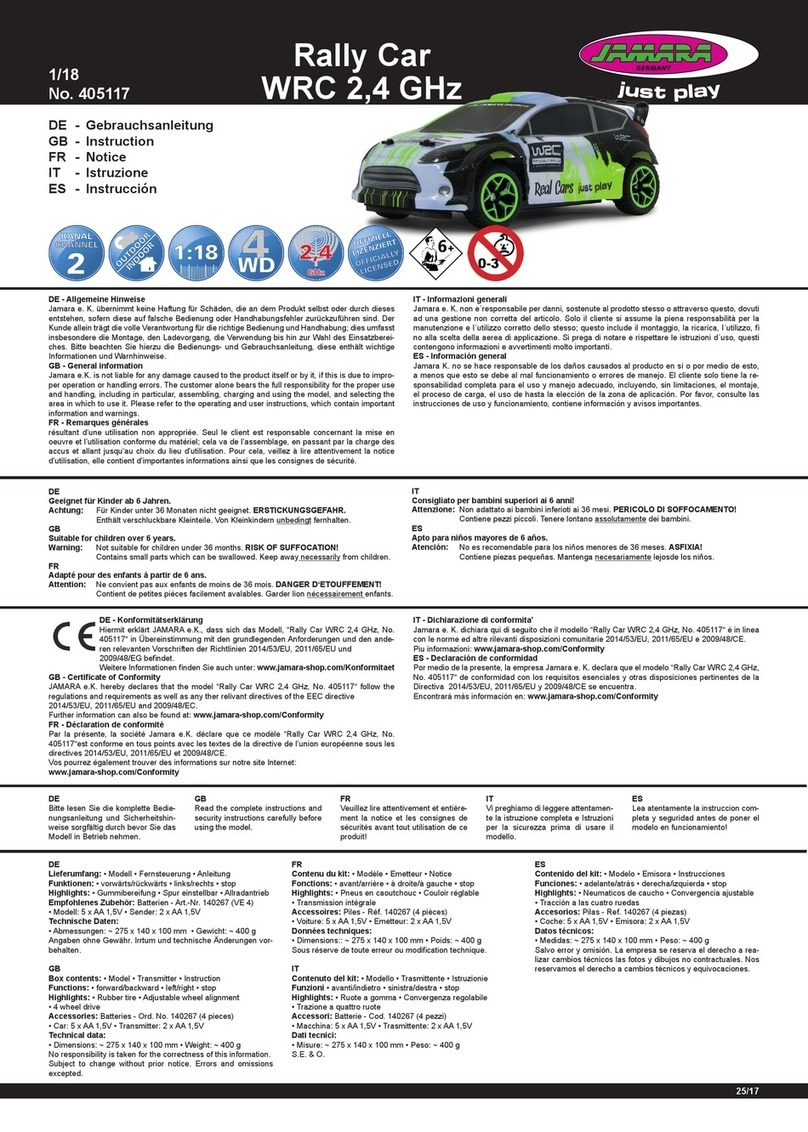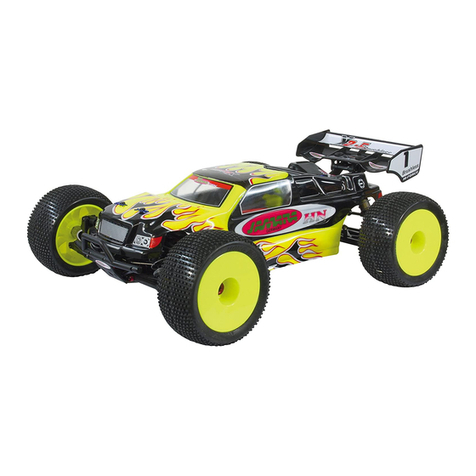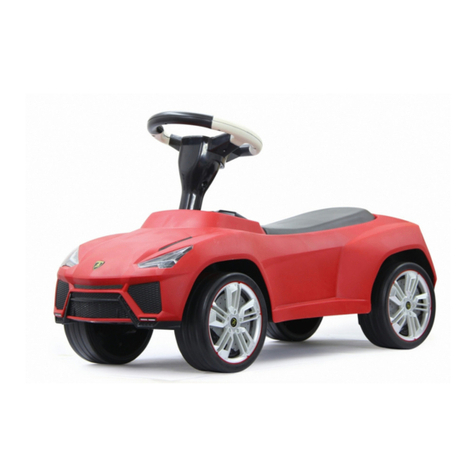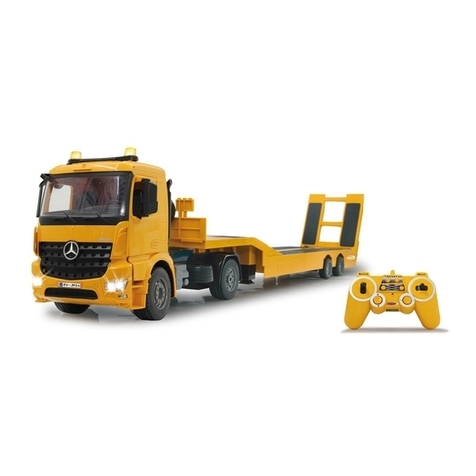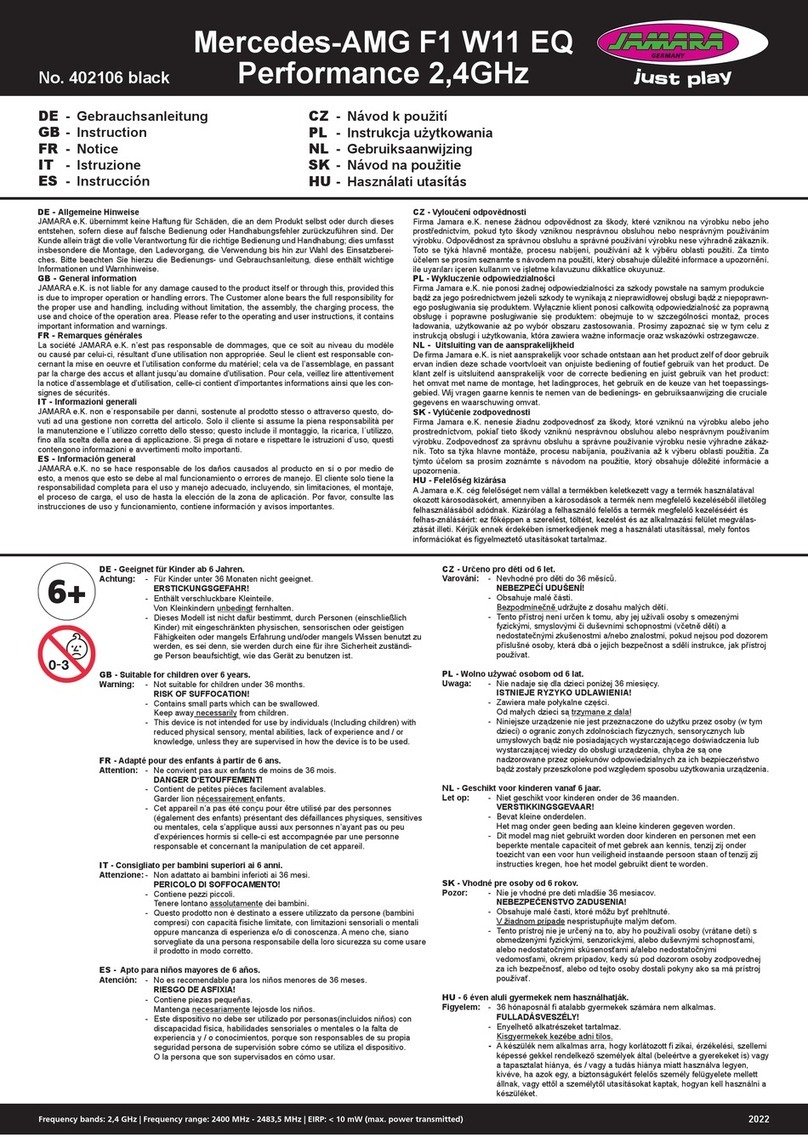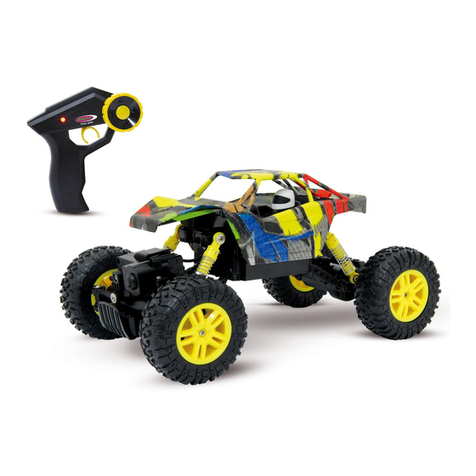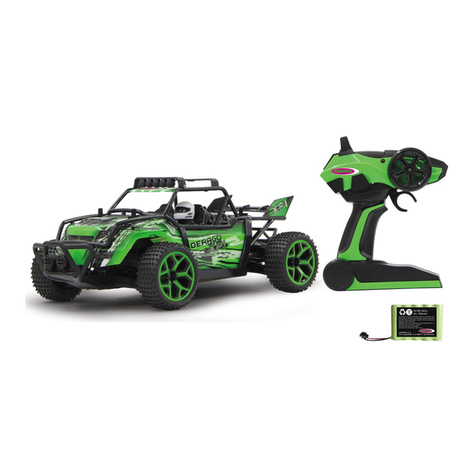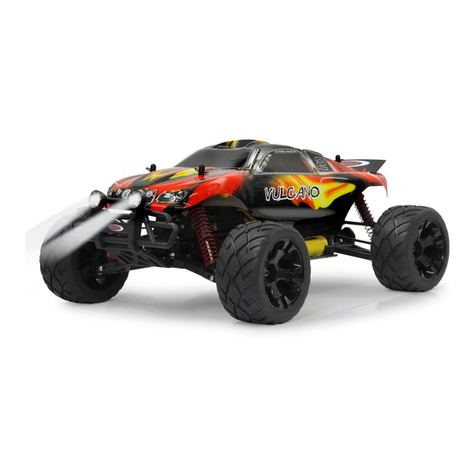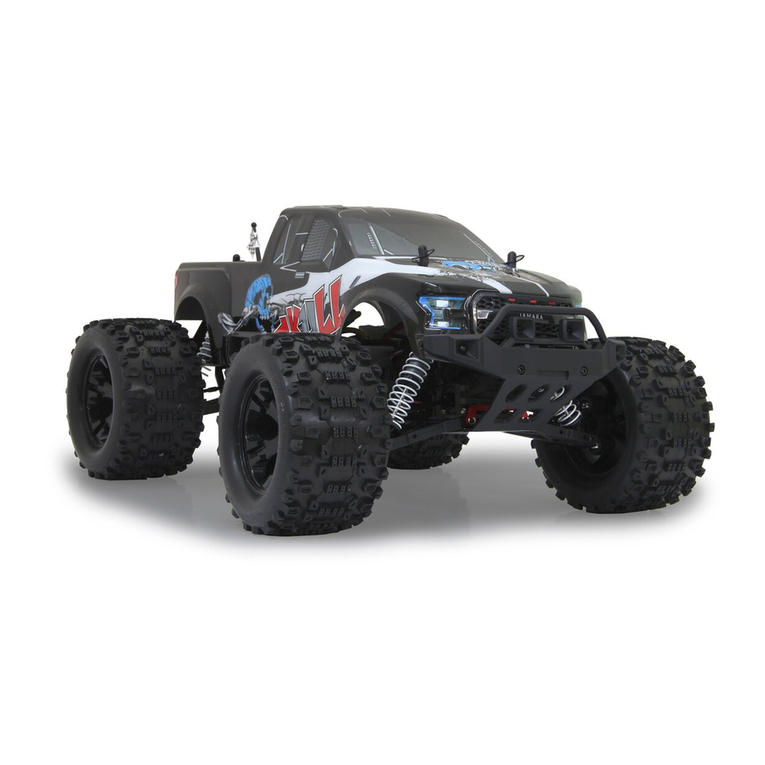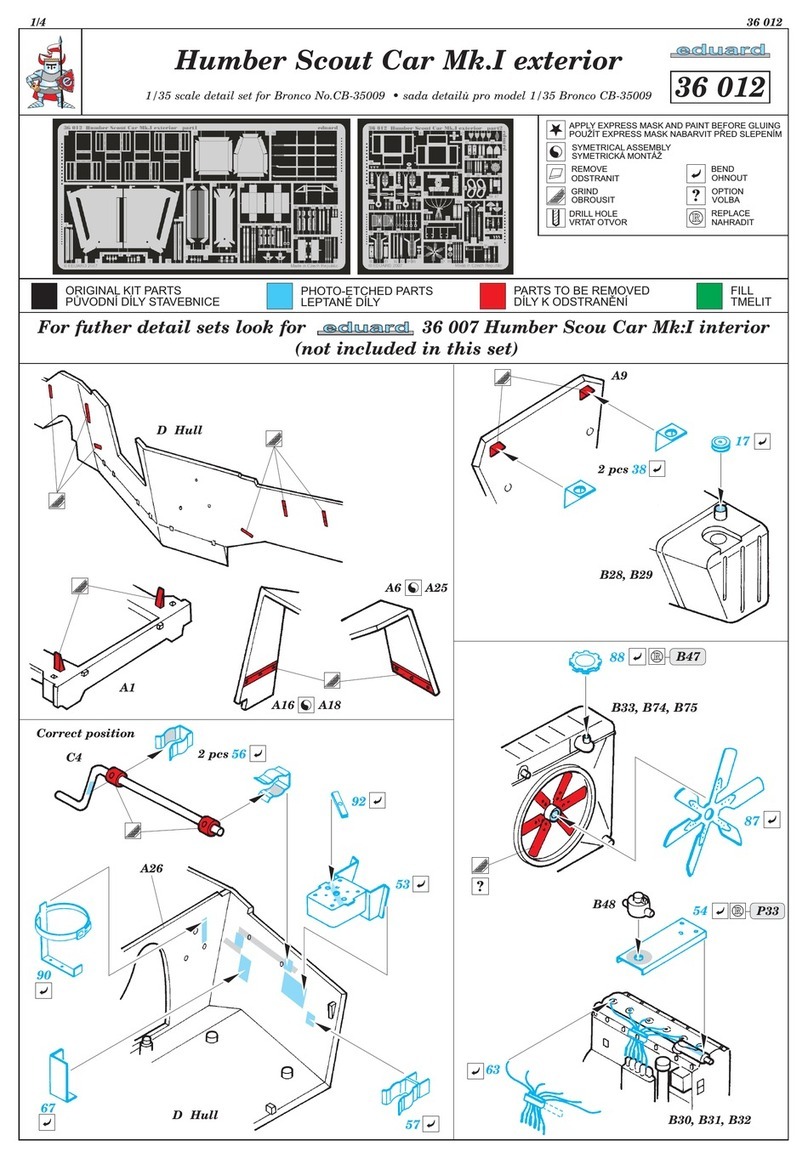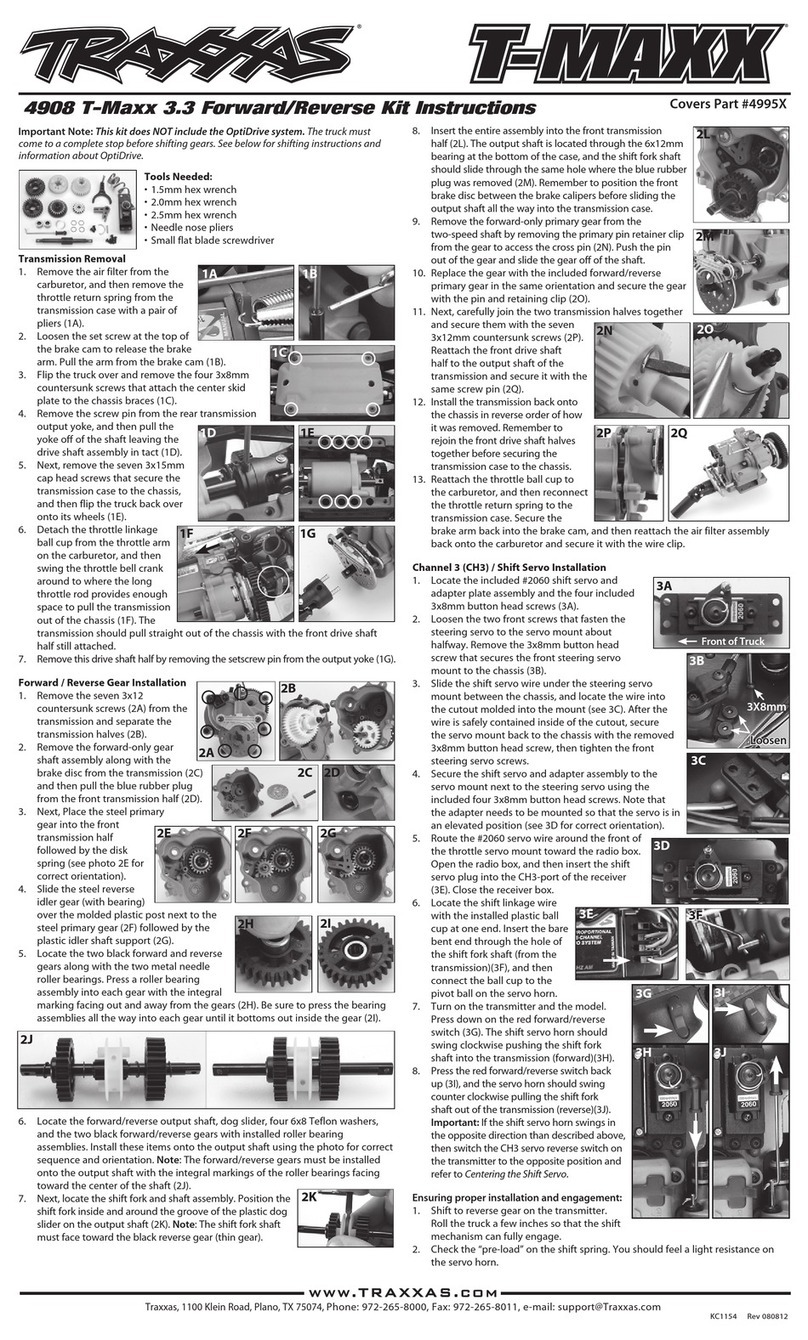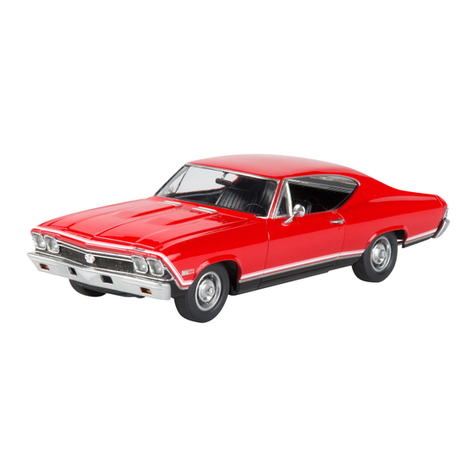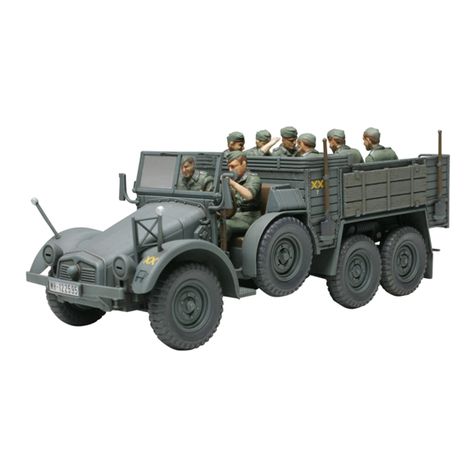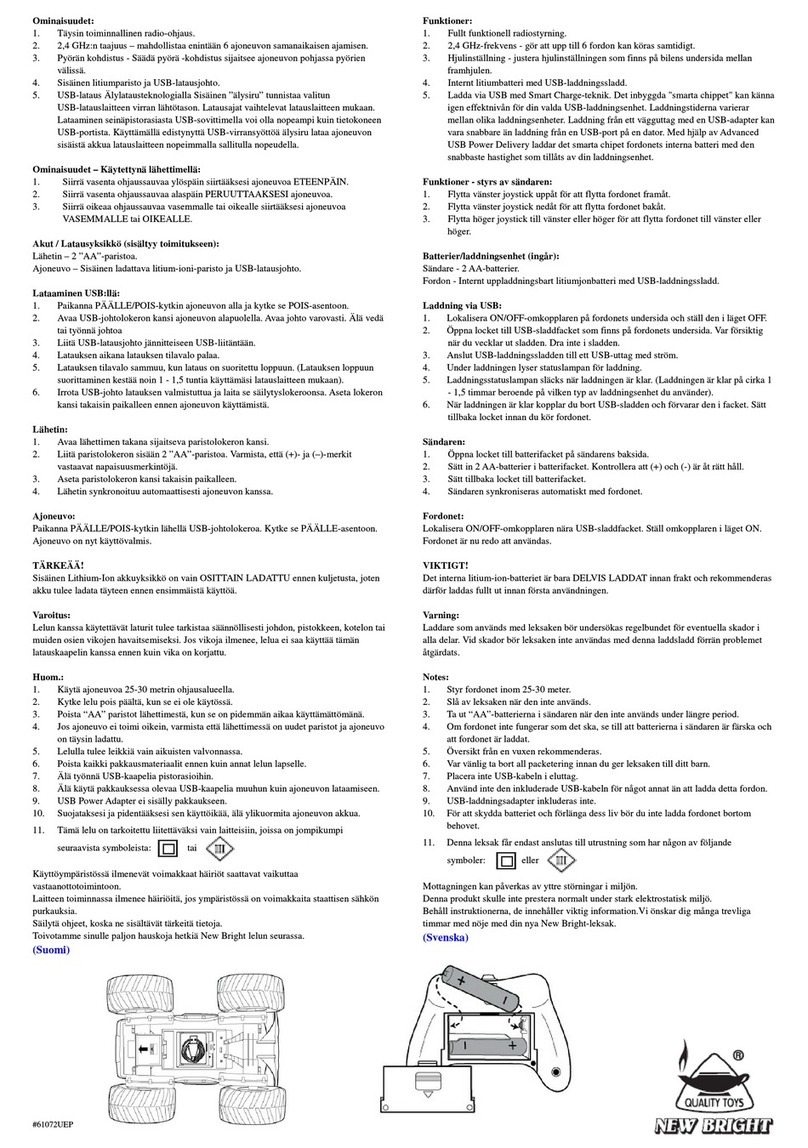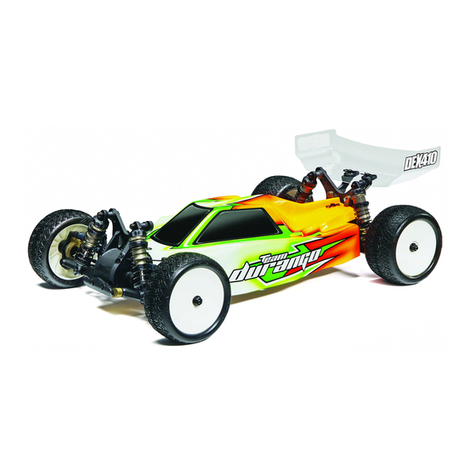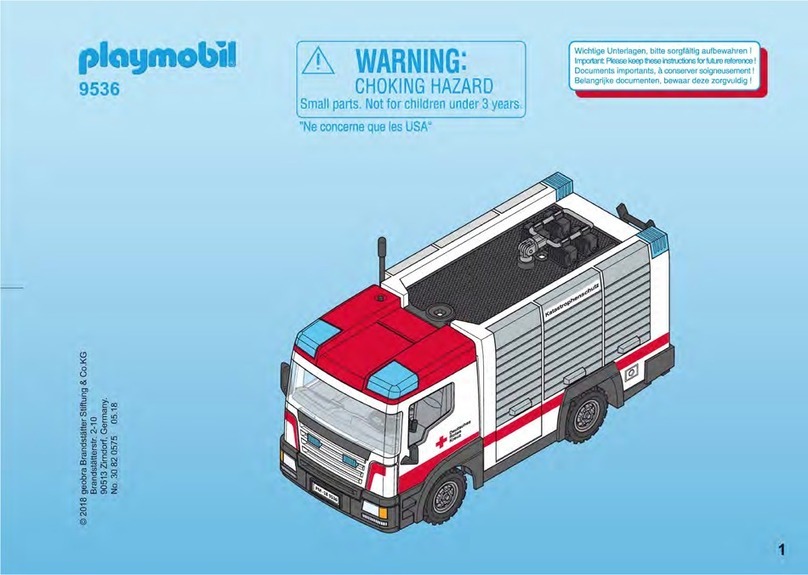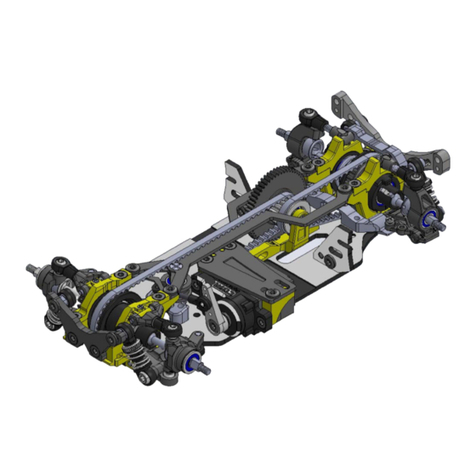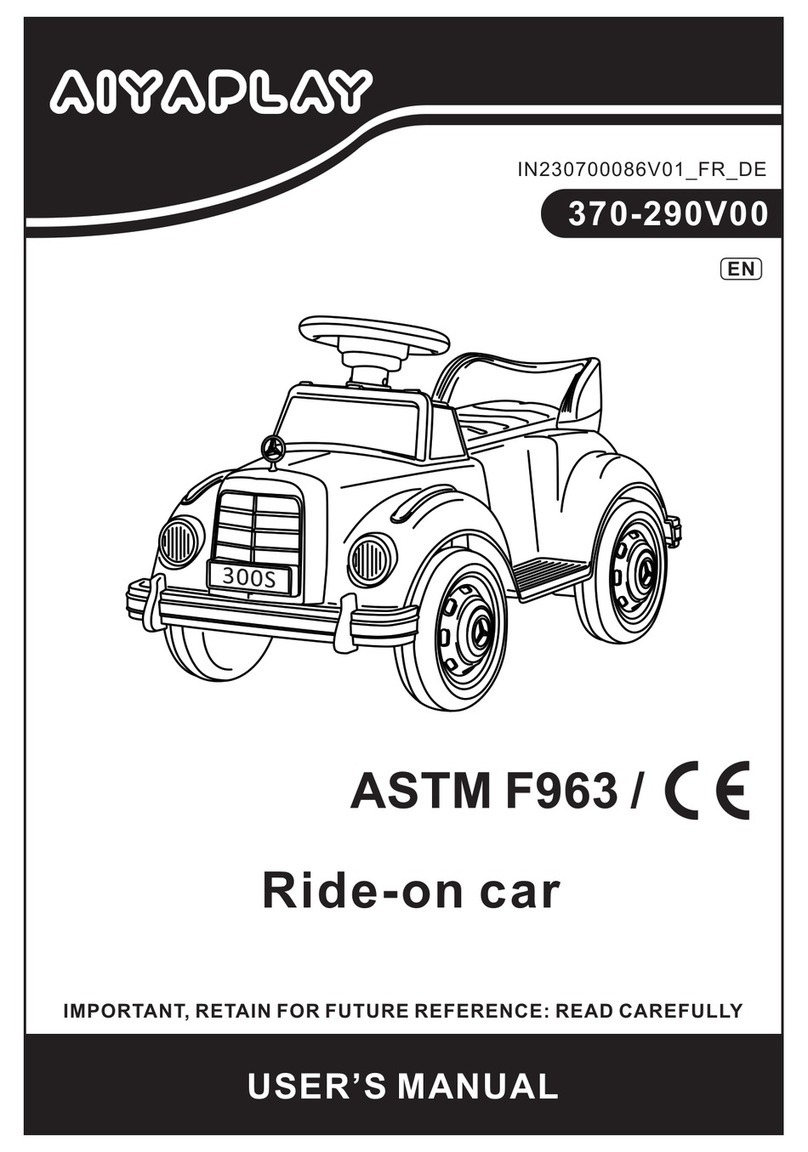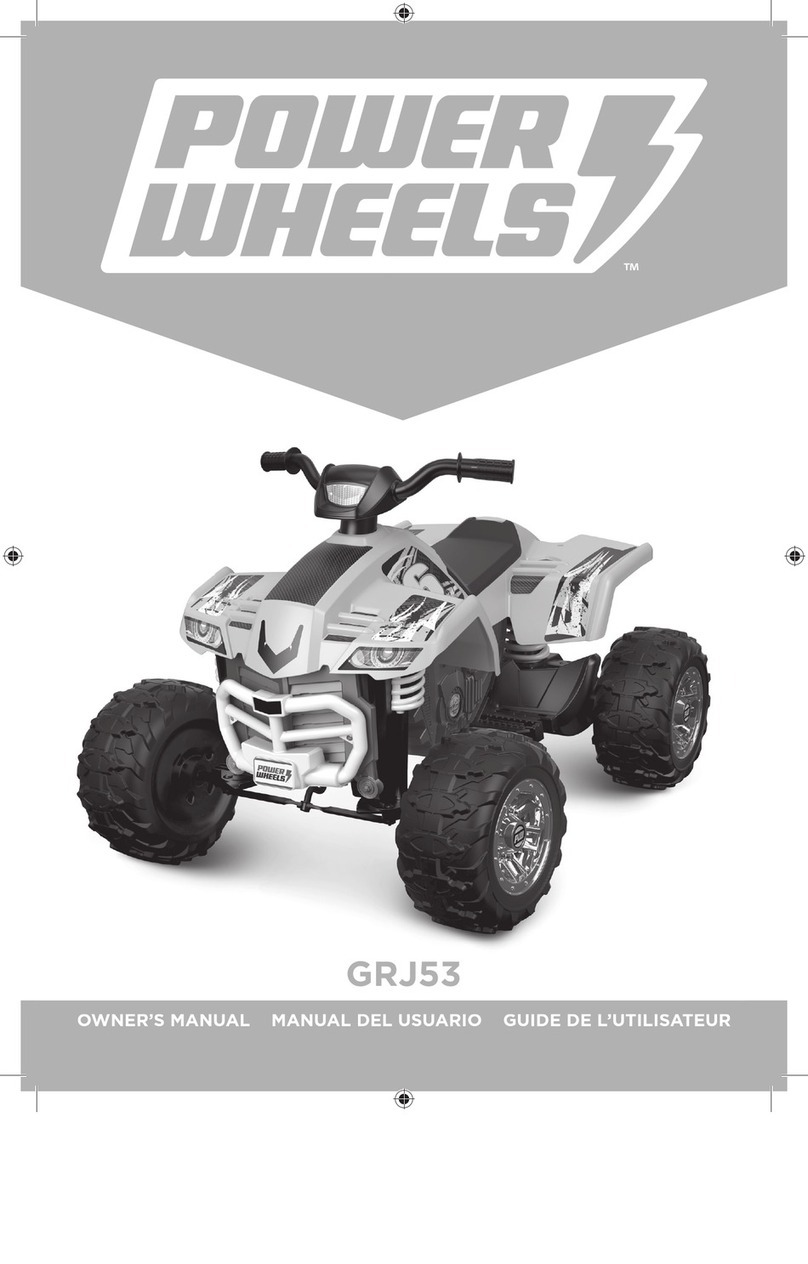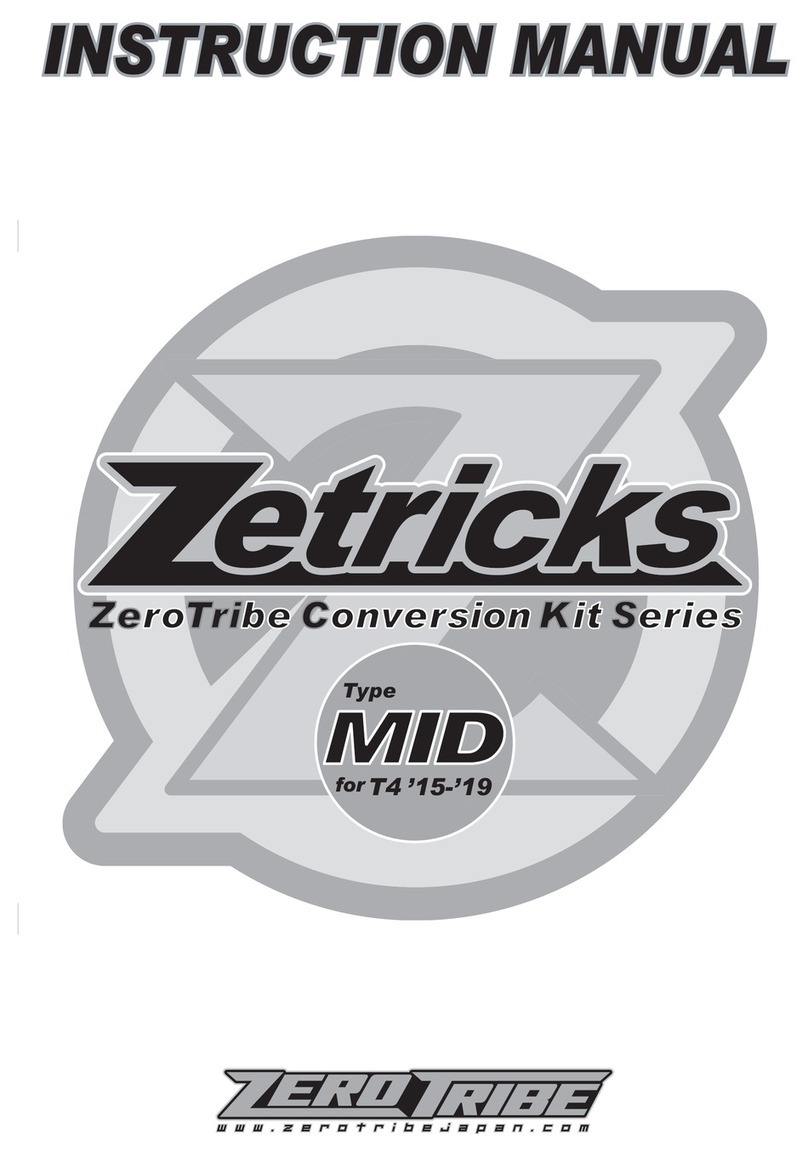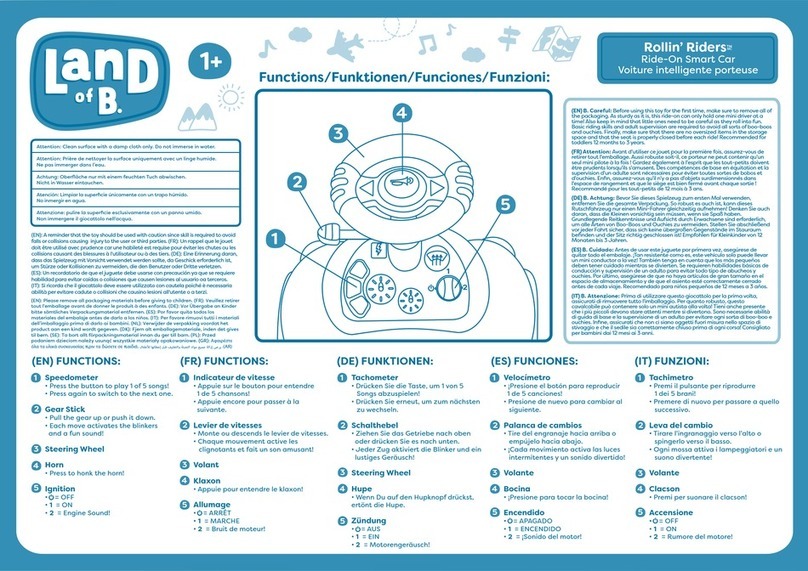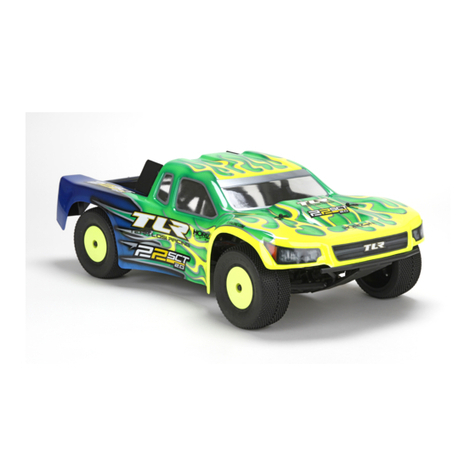
6
ES - El uso del controlador
Conexión al receptor, batería y motor
Conecte el regulador, el receptor, la batería, el servo de dirección
y el motor según el diagrama. Tenga especial cuidado con la
polaridad correcta de la batería. Conecte el cable rojo con el polo
positivo ’+’ y el cable negro con el polo negativo ’-’ de la batería.
Hay que juntar los conectores ’#A’, ’#B’ y ’#C’ con los conectores
del motor. La tecla ’SET’ sirve para la programación.
Conecte la salida del receptor “Canal 2“ con el cable correspon-
diente al regulador. Tenga en cuenta la asignación de los ca-
nales de su emisora. Conecte la salida del regulador con los
conectores del motor. No existe un orden determinado para ello.
Una vez que lo tiene todo conectado, compruebe su correcto
funcionamiento. Si el motor girará en dirección contraria, cambie
dos conectores cualquiera del mismo.
Atención:
Ud. puede cambiar la dirección de giro del motor con la función
“Reverse“ en su emisora, aunque tendrá que tener en cuenta
que después hay que calibrar de nuevo al regulador
GB - Using Your ESC
Connecting the Receiver, Battery Pack and Motor
Connect the ESC, motor, receiver, battery and servo according
to the diagram.
Ensure that you observe the correct polarity of the battery pack.
The red cable should be connected to the ‘+‘ Plus Pole and the
black cable to the ‘-‘ Minus Pole. The ’#A’, ’#B’ and ’#C’ plugs
are connected to the motor. The ‘SET‘ button initiate the pro-
gramming mode.
The ESC should be plugged into the throttle channel of your re-
ceiver which is normally channel 2. If in doubt, check your Radio-
Control System’s instructions. The 3 Motor wires (#A’, ’#B’ und
’#C’) can now be connected, these connectors can be plugged in
any order, and if the motor rotates in the wrong direction any 2 of
the wires should be swapped.
Note:
You can use the servo reverse function of your transmitter to
reverse the motor direction but the ESC will have to be re-ca-
librated afterwards.
Motor
#A
#B
#C
ESC
Kanal 2
Switch
Receiver
channel 1
Servo
Plus pole
red cable
Minus pole
black cable
Set
ON/OFF
Congurar la distancia de frenado y de aceleración
Para garantizar que su ESC funcione correctamente, debe calibrarse. Durante este proceso, se
establecerán las posiciones de aceleración máxima, parada y freno. Hay 3 ocasiones en que la
unidad debe ser calibrado.
• Antes de usar el ESC por primera vez
• Si cambia a un nuevo transmisor
• Si se cambia el punto neutral o el servo de lanzamiento dentro de su transmisor
Para la calibración, siga los siguientes pasos :
1. Encienda la emisora con el receptor apagado. Si usa un equipo Futaba, tenga en cuenta que
la función del gas tiene que estar en “Reverse“. Los recorridos máximos de servo tienen que
estar en punto neutral. Además tiene que haber apagado una posible función de ABS en su
emisora.
2. Después encienda el receptor con la tecla del regulador. Al mismo tiempo mantenga
presionado la tecla ’SET’. Así entrará en el modo calibración, el LED empezará a parpadear.
Cuando ocurra esto, suelte la tecla. Si no suelta la tecla ’SET’ nada mas que comienza a
parpadear el LED, entrará en el modo programación. Si esto no era su intención, tiene que
volver a apagar el regulador. La siguiente ilustración enseña como entrar en el modo
calibración.
3. Se pueden congurar tres parámetros :
• Posición neutral
• Recorrido máximo hacia delante
• Recorrido máximo hacia atrás
En las siguientes ilustraciones puede ver estos procesos de forma gráca.
4. Mueva el mando del acelerador a posición neutral y presione la tecla ’SET’, el LED verde
parpadea una vez y el motor emite una señal acústica. Mueva el mando del acelerador a la
posición nal para ir hacia delante y presione la tecla ’SET’, el LED verde parpadea dos veces
y el motor emite dos señales acústicas. Mueva el mando del acelerador a la posición nal
para ir hacia atrás y presione la tecla ’SET’, el LED verde parpadea tres veces y el motor
emite tres señales acústicas. Tres segundos después de acabar la calibración ya puede
arrancar el motor.
Throttle range calibration
To ensure that your ESC operates correctly it has to be calibrated. During this process the full
throttle, stop and brake positions will be set. There are 3 occasions when the unit must be
calibrated.
• Before using the ESC for the rst time
• If you change to a new transmitter
• If the neutral point or servo throw is changed within your transmitter
To calibrate the system, please proceed as follows:
1. Ensure that the receiver is switched OFF and switch ON the transmitter. If you are using a
Futaba transmitter. The throw should be set to neutral. If the transmitter is tted with an ABS
function this must be de-activated.
2. Press and hold down the ‘SET‘ button on the ESC and switch the receiver switch ON. This will
switch the ESC into Calibration’ mode and the LED will begin to blink. If you fail to release the
‘SET’ button as soon as the LED blinks, the ESC will enter ‘Programming’ mode. If this
happens, you will have to switch the ESC o and start again to enter ‘Calibration’ mode.
3. Parameters can be set here:
• Neutral point
• Full throttle forwards
• Full throttle reverse
The procedure for setting these 3 points is outlined below:
4. Ensure that the throttle control is in the neutral position and press the ‘Set‘ button. The green
LED will ash once and the motor will omit a beep. Move the throttle control to the full throttle
(forwards) position and press the green ‘Set‘ button. The green LED will ash twice and the
motor will omit 2 bleeps. Move the throttle control to the full reverse position and press the
‘Set‘ button. The green LED will ash 3 times and the motor will omit 3 bleeps. 3 Seconds after
this procedure has been followed, the motor is ready for use.
Mantenga presionada Encienda el interruptor Suelte el botón SET,
la tecla SET tan pronto como los LED rojos parpadeen
Hold the SET keep button Turn on the switch Release the SET button as soon
as the red LEDstarts to blink
ON/OFF
1
ON/OFF
Set LED
Neutral point
rst click second click third click
Point of full throttle Point of full brake
2
LED verde
parpadea una vez
Green LED ashes
once
LED verde
parpadea dos veces
Green LED
ashes twice
LED verde
parpadea tres veces
Green LED
ashes thrice
Set
Set Set
Señales y dispositivos de seguridad
Durante el modo de funcionamiento normal, las señales de los LEDs signican lo siguiente:
a. Sin LED = Pedal Pulso en posición neutral
b. LED rojo = el vehículo se mueve hacia adelante o hacia atrás
c. LED verde = el acelerador se encuentra en el máx. Posición delantera o inversa
A través de señales de advertencia, el regulador informa de ciertos estados:
1. Al encender, el procesador comprueba el voltaje que entra, y si éste estuviera fuera de los
límites aceptables, suena una señal acústica doble con una pausa de un segundo, entre las
señales individuales “beep-beep-, beep-beep-,beep-beep-”
2. Si la señal de entrada no es correcta, suena una señal acústica con una pausa de dos se
gundos, entre las señales individuales “beep-, beep-, beep-”
Este regulador está equipado con una serie de sistemas de protección para asegurar su uso
de forma segura:
1. Corte por baja tensión:
Cuando el nivel de tensión de una batería LiPo bajo carga desciende durante aprox. 2
segundos por debajo del umbral ajustado, se reduce la potencia del motor hasta que se
desconecta completamente. Tenga en cuenta que el motor no se puede volver a arrancar si
la tensión es inferior al valor preestablecido.
2. Corte por sobre calentamiento
En el momento que la temperatura del regulador sube por encima de 95°C durante 5
segundos, se apagará el motor. Después del apagado es imprescindible dejar enfriar el
regulador, ya que en caso contrario sufre daños.
¡No se puede desactivar esta función bajo ningún concepto
3. Señal de entrada incorrecta
Si la señal de entrada es considerada incorrecta durante 0,2 segundos, se apagará el motor.
LED’s, errors and protection
In normal use the LED will illuminate as follows:
a. If the throttle control is in the neutral position, neither the red or green LED will illuminate.
b. The red LED will illuminate if the vehicle is driving forwards or in reverse. If the vehicle is
braking, the red LED will ash rapidly. When the car moves forward, the red LED solidly
lights; the green LED also lights up when the throttle stick is at the top position (100%
throttle).
c. The green LED will illuminate when the vehicle is at full throttle either forwards or in reverse.
In certain circumstances the ESC will omit an acoustic tone to warn you of a problem:
1. On switching on, the ESC will check the battery pack voltage and if it falls outside the correct
values it will omit double signals followed by a 1 second pause: “beep-beep-, beep-beep-,
beep-beep-”
2. If the ESC does not receive a signal from the transmitter it will omit single signal followed by
a 2 second pause: “beep-, beep-, beep-”
The ESC has ben equipped with a series of protective circuits to ensure safe operation:
1. Low voltage cut-o:
If the voltage drops below the set value for more than 2 seconds the ESC will switch the
motor o. Please note that the motor cannot be started again if the voltage is below the
choosen value per cell.
2. Temperature cut-o
If the internal temperature of the ESC rises above 95°C for more than 5 seconds the motor
will switch o. After the ESC switches o it has to cool down before operating again.
Otherwise the ESC will be damaged. This function should not be disabled!
3. Signal loss
If the signal is lost for more than 0.2 seconds the ESC will switch the motor o.
